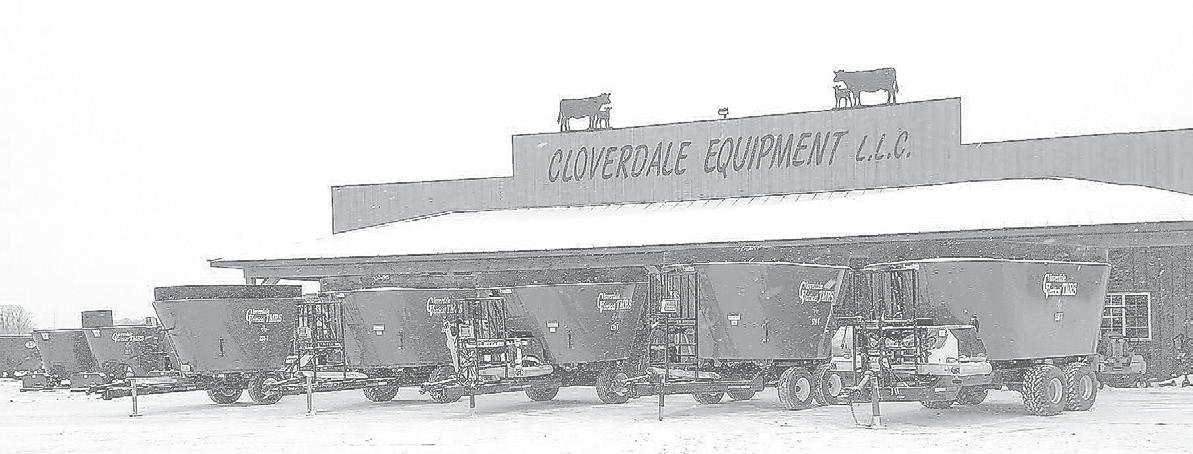
6 minute read
Problems with pokeweed? Get the facts
Common pokeweed is native to the eastern half of the United States. According to the Ohio Perennial and Biennial Weed Guide, which can be found at weedguide.cfaes.osu. edu, the distribution of this species has not been mapped in Ohio, but it appears to be widespread and is continuing to invade reduced-tillage fields.
Dangerous. Its deep tap roots make it difficult to dig up, but don’t worry, it will die back with the frost. Pokeweed can reach up to 10 feet in height and has distinctly red stems and berries that change from green to dark purple when ripe.
Advertisement
can be cooked into what is called “poke salad,” but knowing how to properly prepare this salad is very important.
Leaves must be boiled and drained twice to be eaten safely, but it isn’t recommended. Can you be absolutely sure that you handled and prepared it properly? If the answer is no, then just avoid experimenting eating any part of the plant.
Have you ever found any strange stockpiles of seeds in your home or garage? Whenever this happens, it can be hard to identify what those seeds are. Sometimes they may even appear to be insect-related and send you down a rabbit hole on the internet trying to identify this suspicious occurrence.



This exact thing happened to me this past winter. Hopefully my research into this phenomenon will save you some time in the future if it happens to you, too.
In December, I was getting all the Christmas decorations down from the upstairs closet in our old farmhouse. We moved here about a year ago, and like any old farmhouse, there are always some unwanted guests, such as stink bugs, lady bugs and mice.
Mysterious black seeds. I stumbled upon a pile of black seeds. These seeds were about ¼ of an inch across and they were round but slightly flattened. At first, I thought they were some sort of insect eggs but was really hoping they were seeds.
They were loose in their hiding spot, but also clumped together giving them the appearance of eggs. I didn’t think much of it, just threw them away and decorated for Christmas.
A few weeks later, I was going through my son’s dresser and sorting through all the clothes that he had outgrown. Low and behold, I opened a drawer to find yet another stash of these black seeds piled high in the back corner of the drawer around his socks.
This made me really want to figure out what was going on here.
Rodent food. After much research on the internet and through the Ohio Weed Guide, I figured out they were pokeweed seeds. Unfortunately, this means we have a rodent problem.
Mice like to gather seeds and make hoards for winter and with the abundance of pokeweed plants right behind my house, I felt satisfied I found the culprit. Lucky for me, the mystery is solved; unlucky for the poor mice who will now starve because I vacuumed up their hoard.
By August, many or most of these berries have become shiny and purple and can be attractive to children who may mistake them for grapes. Although the berries may be considered a grape look alike, I wouldn’t recommend eating them.
According to poison control, eating several berries can cause pain, nausea, vomiting and diarrhea. Adults who have eaten the roots, mistaking them for medicinal plants have experienced serious gastrointestinal problems and low blood pressure.
Pokeweed is an herbaceous perennial with multiple red stems. In the spring, young pokeweed leaves
Symptoms of poisoning include a burning sensation in the mouth, salivation, gastrointestinal cramps and vomiting. If larger quantities are consumed, more serious complications can occur that include anemia, convulsions and death from respiratory failure.
Just remember: A donut wouldn’t do that to you!
Toxic to pets. So, we know pokeweed is poisonous to humans, but what about pets and livestock? Well, referring back to the Perennial and Biennial Weed Guide that has determined the location of this poisonous weed to be found often in pastures, fencerows and barnyards, all parts of common pokeweed are toxic to pets and livestock.
The roots are the most poisonous; leaves and stems are intermediate in toxicity and the berries are the least toxic. According to U.S.
Department of Agriculture, cattle, horses, swine and men have all been poisoned after consuming this plant, but swine are more often affected since they often grub out the roots and eat them.
The silver lining when it comes to livestock is that they don’t find pokeweed to be very palatable, so most animals will avoid eating it if they are being fed well and have other options to choose from.
Hopefully you don’t find too many hoards of food from our furry little friends in your home! If you have any questions regarding toxic forages or rodent control, contact your local OSU extension for more information.
(Catelyn Turner is an OSU Extension Agriculture and Natural Resource Educator.)

A New Holland T5 Series tractor with a Dual Command™ transmission is a difference maker. This easy-to-use 24x24 transmission gives you a Hi-Lo speed with the push of a button in each of the four gears within the three ranges. Additionally, the PowerClutch button lets you conveniently shift between gears within a range instead of pushing the clutch pedal. An electro-hydraulic, column-mounted shuttle with three aggressiveness settings to match your job at hand is standard. Choose from four fuel-efficient, fourcylinder models ranging from 73- to 100-PTO horsepower and either the comfortable VisionView™ cab or open-air ROPS platform.
Take command of productivity with a T5 Series Dual Command tractor. Stop in


Winona nationals
Derby Style tractor Pull anD KiDS PeDal Pull
- July 22, 2023 - location: Hall Park in Winona
Pedal pull for ages 3-10, bring your own pedal tractor (one will be provided if needed)
Entry fee for Pedal Pull $5, sign up starts at 1:00 with Pedal Pull beginning at 2:00
Derby Pull to follow immediately after Pedal Pull
Entry fee for derby pull $10, weight classes 3500, 4500, 5500, 6500, 7500, 8500
Brought to you by Just Rite 4H Club
Questions call Jen or carlton 330-222-0344
4 7
We also carry: Retaining Wall Block Railroad Ties • Mulch

Stepping Stone
Notice:
UNIVERSITY PARK, Pa. — A field day event held recently by Penn State Extension gave youth 4-H members from across Pennsylvania an opportunity to explore their interest in wildlife and forestry. The “Exploratory Tract” for youth 7-11 included hands-on wildlife and forestry educational activities and guest speakers. The theme was “Big, Bigger and Biggest!” and featured workshops on invasive plant species, amphibians and reptiles and wildlife population dynamics.
The “Science Tract” offered youth 12-18 a chance to participate in a series of educational sessions to increase their knowledge and skills related to wildlife and forest sciences. According to organizers, the sessions brought to life content from 4-H wildlife and forestry project books and helped 4-H’ers better understand current conservation issues. The event also was aimed at inspiring participants to investigate potential career paths in forest and wildlife conservation.
Teens hoping to attend national 4-H competitions in wildlife and forestry competed in knowledge and skills tests.
The wildlife science competition results were as follows:

• first place to Carson Riley, of Huntingdon County.
• second place to Grace Ziegmont, of York County.
• third place to Madison Cousins, of Armstrong County.
• a fourth place tie between Carley Locke, of Crawford County; Gideon Sensenig, of Lancaster County; Jasper Martin, of Montour County; and Olivia Creek, of Cumberland County.

• fifth place to Isaiah Snyder, of Blair County.
A team of these top scorers will represent Pennsylvania at the 2023 National Wildlife Habitat Evaluation Program Invitational, July 30-Aug. 2 in Milford, Iowa. The ecoregion of focus for this year will be the Great Plains grasslands and tallgrass/mixed prairie.

•
• •
BURTON, Ohio — Geauga Prime Time is a multi-animal club where members can raise anything from chickens to lambs to cows.

This club is very involved in the community, participating in projects such as making care packages for soldiers, helping at a spaghetti dinner to support a family who lost a mother and child in a fire and making blankets for veterans. In addition, the club will be hosting a “dine and donate” at Manga Manga on a future date; if you tell your waiter “Geauga Prime Time,” 20% of the proceeds will go to the club. Another fundraiser will be the annual corn and bake sale at Burton Square, Aug. 6.
• • •
HANOVERTON, Ohio — The Hicks and Hayseeds 4-H Club met June 6 at Baker’s Golden Dairy. Club member Ashley Hershberger is an intern at the dairy and gave the club a tour. The members saw the cows being milked by the robot. The calf barn was full of calves that everyone got to pet and see fed, and the group saw where milk and ice cream were made.
In other business, the club will be cooking a Fourth of July meal for the Kendall Home. The menu will be sausage sandwiches with peppers and onions, potato and cucumber salads and a cherry dessert.

On July 1, all animals going to the fair will need to be registered again via the fair entry system. The link will be on the junior fair website. Dairy posters are due July 13 at 7 p.m. at the fair.
Demonstrations were given by Bryce Wood on repairing a deer antler, Ava Wood on planting seeds in a flower pot, and Hayden Casto on trapping coyotes.










